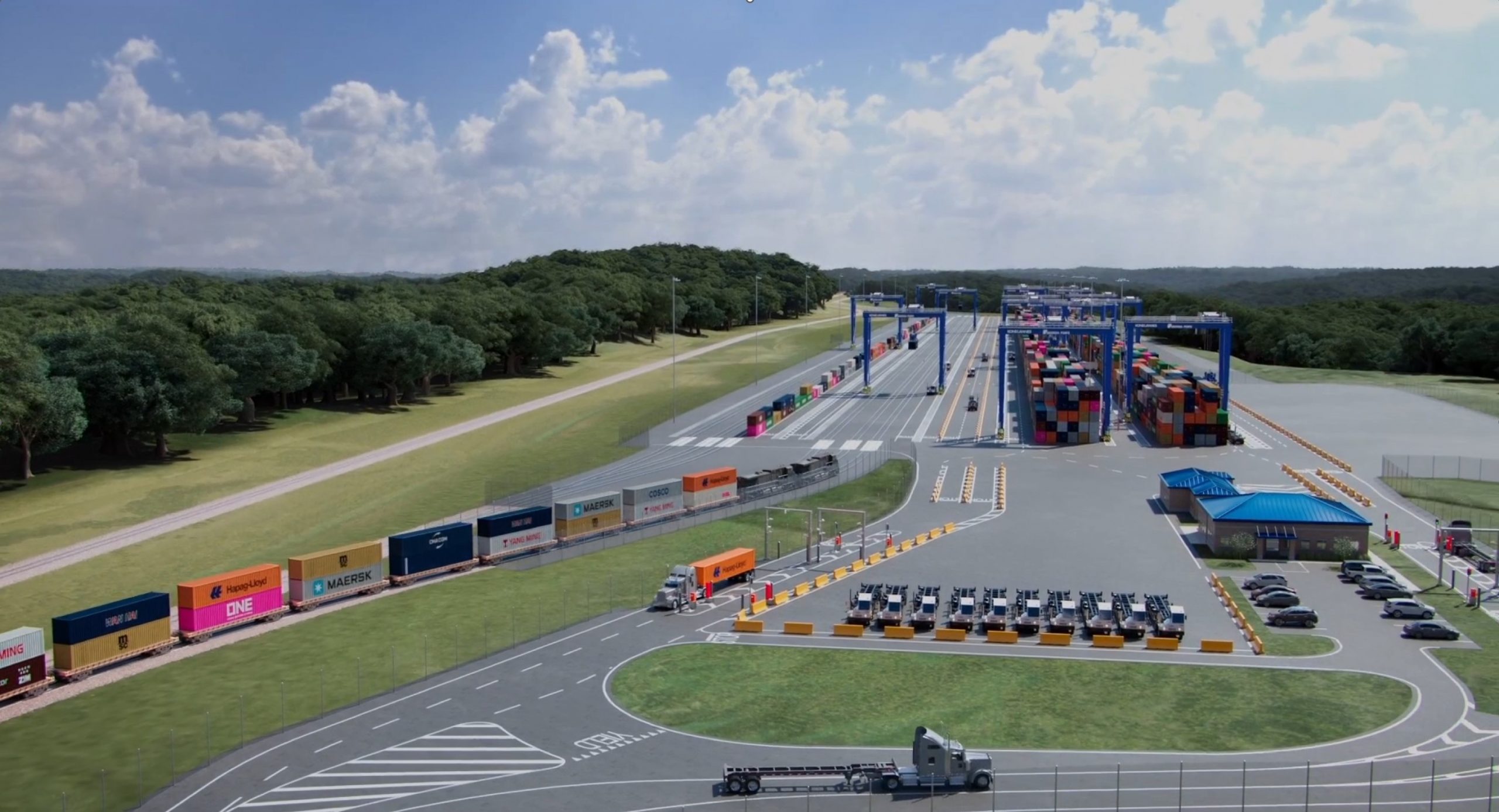New inland port will serve as economic driver for growing region
SAVANNAH, Georgia, January 23, 2023 – Georgia Ports continues its focus on infrastructure and engineering projects in 2024 to create business opportunities for customers, business partners, communities and rural Georgians.
The Blue Ridge Connector is a catalyst for enabling businesses to succeed through a competitive supply chain in a growing Northeast Georgia regional market. Opening in 2026, the Blue Ridge Connector will serve as an important connection for this growing distribution area.
Port officials offered an update recently to representatives from surrounding counties and customers about the arrival of this new infrastructure for future growth. Economic development officials from more than a dozen surrounding Georgia counties along with Lanier Technical College and Georgia Department of Economic Development leaders participated in a presentation to learn more about the impact of the Blue Ridge Connector on area commerce.
“The Blue Ridge Connector is designed to open access to world markets and create a positive economic impact in the Northeast Georgia region by connecting the Port of Savannah’s 37 weekly global services with Gainesville, Georgia,” said Stacy Watson, GPA’s Director of Economic & Industrial Development. “Every effort has been made to improve the supply chain experience, enable future growth while being sensitive to surrounding communities.”
The 104-acre location will link to the Port of Savannah’s Mason Mega Rail – the largest on-dock rail facility in North America, with daily rail departures on CSX and Norfolk Southern to inland markets. The port currently moves approximately 20% of cargo via rail to inland destinations and 80% by truck.
In addition to providing importers and exporters with efficient new options to move their cargo, the Blue Ridge Connector will also deliver sustainable logistics solutions via rail. By linking to the Port of Savannah via rail, the Blue Ridge Connector will reduce congestion on Georgia highways, eliminating the 600-mile roundtrip drive to and from the coast. This means offsetting emissions by as much as 75%, lowering transportation costs for importers and exporters and providing closer drayage for truck drivers who can transport containers in their own markets, closer to home.
The new inland port will be served by 14 hybrid-electric rubber-tire gantry cranes which reduce diesel dependency and use white noise audio features to curb noise. Equally important, efficient LED lighting will direct light downward within the facility, minimizing light pollution in nearby communities while reducing energy consumption.
“Our analysis of this market with customers and the market growth potential is lining up well. We’re excited about creating a new supply chain that makes our customers compete stronger, more sustainable and enable their long-term growth plans year-over-year,” added Taylor Worley of Georgia Ports Market Research and Economic Development who presented at the meeting.
Area officials have welcomed the historic investment by Georgia Ports, which will draw new investment to the state as the Northeast Georgia region continues to grow.
About Georgia Ports
Georgia’s ports and inland terminals support more than 561,000 jobs throughout the state annually, and contribute $33 billion in income, $140 billion in revenue and $3.8 billion in state and local taxes to Georgia’s economy. GPA anticipates investing $4.5 billion in the next ten years as part of its port master plan to expand cargo handling capabilities to support future supply chain requirements. As part of GPA’s community engagement efforts, $6 million will be donated to communities located near the Port of Savannah to support a multi-year, local workforce housing initiative. CNBC ranked Georgia #1 in the U.S. for infrastructure in America’s Top States for Business in 2023. Area Development – a site selection news outlet for the U.S., has ranked Georgia as the Top State to Do Business for ten consecutive years. For further information, visit gaports.com or contact Chief Communications Officer Tom Boyd at [email protected] 912-964-3855.
